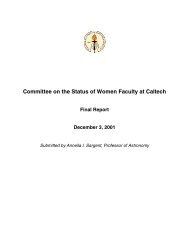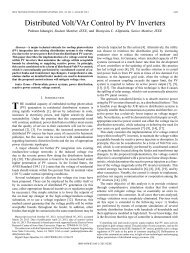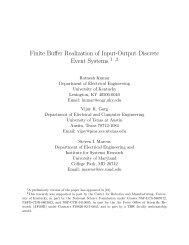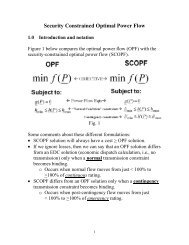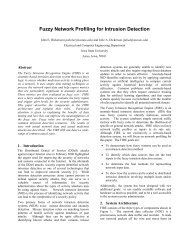Linearized Analysis of the Synchronous Machine for PSS Chapter 6 ...
Linearized Analysis of the Synchronous Machine for PSS Chapter 6 ...
Linearized Analysis of the Synchronous Machine for PSS Chapter 6 ...
You also want an ePaper? Increase the reach of your titles
YUMPU automatically turns print PDFs into web optimized ePapers that Google loves.
For stability, <strong>the</strong> composite electrical torque must have positive<br />
damping torque, which means that it must have a component in<br />
phase with speed deviation.<br />
So we can per<strong>for</strong>m a qualitative analysis using <strong>the</strong> following ideas:<br />
• Any electrical torque contribution in phase with angle deviation<br />
contributes positive synchronizing torque.<br />
• Any electrical torque contribution in phase with speed deviation<br />
contributes positive damping torque.<br />
Inertial torques:<br />
Let’s begin by just analyzing <strong>the</strong> “inertial” loops in <strong>the</strong> block<br />
diagram. These are <strong>the</strong> ones corresponding to D and K 1 , as<br />
indicated by <strong>the</strong> two bold arrows in Fig. 3.<br />
Fig. 3<br />
• We see that <strong>the</strong> torque contribution through D, ΔT D , is<br />
proportional to Δω so it contributes positive damping, as<br />
expected.<br />
• The torque contribution through K 1 , ΔT S , is proportional to Δδ<br />
so it contributes positive synchronizing torque, 90 degrees<br />
behind <strong>the</strong> damping torque. Figure 4 below illustrates.<br />
8




